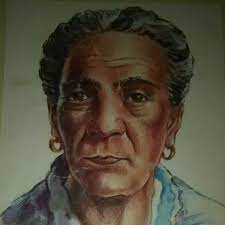
Mariana Grajales Coello: The Mother of the Nation
Considered Mother of the Homeland and symbol of Cuban women, Mariana Grajales stood out for her integrity during the struggle for the independence of Cuba that began in October 1868.
About her José Martí expressed in a work that he published in the Patria newspaper on January 6, 1894, shortly after the death of Mariana Grajales: "What was in that woman, what epic and mystery was in that humble woman, what sanctity and anointing there was in her mother's womb, what decorum and greatness there was in her simple life, that when she is written about it is as from the root of the soul, with the softness of a son, and as of endearing affection.”
Mariana Grajales is also surrendered in Havana. Precisely in the park that is located in the area between streets 23, 25, C and D, in Vedado, Plaza de la Revolución municipality, there is a moment dedicated to paying tribute to this great figure in the history of Cuba.
This monument was inaugurated in 1931 on the occasion of the 35th anniversary of the fall in combat of Major General Antonio Maceo, son of Mariana, and was made by the renowned Cuban sculptor and painter Teodoro Ramos Blanco.

He won the First Prize in the Contest for the Monument to Mariana Grajales, convened three years before the construction site.
Doctor Emilio Roig de Leuchsering, Historian of the City, in one of his writings, described the monument, detailing that it consisted of a basement with a staircase and gardens, and a platform, a granite block in the shape of a pyramid, where stands a bronze sculpture group.
On the pedestal, a relief plaque depicts scenes from Cuba's struggle for independence and under the plaque, there is a small fountain. The sculptural group personifies Mariana Grajales standing, holding one of her wounded children with one of her arms and pointing with her arm that others must continue the fight for the Homeland.
Mariana Grajales was born in Santiago de Cuba on July 12, 1815, as recorded in book number 9, page 99 of her baptismal certificate.
She was the daughter of Dominicans and had four children from her first marriage and another nine from her subsequent union with Marcos Maceo.
When the fight for the independence of Cuba began, Mariana urged her children to give her contribution. She even moved to the rural areas of Oriente province despite being 60 years old.
She thus united her life and that of her family to those who fought for Cuban independence. With singular heroism, she faced the fall in combat of her loved ones, including her husband and several of her children.
Her firmness as her revolutionary mother was reflected eloquently and symbolically in a gesture that is reflected in the history of Cuba. After having suffered the recent loss of one of her children, they brought Antonio Maceo bleeding from various wounds.
When contemplating the stretcher on which his son was found, he turned to the youngest of his descendants who was not 15 years old and shouted: “And you, boy, get up and fight like your brothers, to defend the Homeland...”
In 1878, after the ten-year war ended, Mariana Grajales left for Jamaica ready to continue the fight and to continue supporting her children and the other Cuban patriots.
At all times she was there, she remained attentive to the situation in Cuba and encouraged all those who wanted to resume the struggle for the independence of her homeland.
She met José Martí when he visited Jamaica in 1893 and she treated him as if he were another son.
In the full confidence that she would achieve the freedom of Cuba, the last years of her fruitful existence passed. Mariana Grajales on November 28, 1893.
Over time, the life and work of Mariana Grajales has been a source of inspiration and teaching for the Cuban people, including various poets and artists who have reflected in her works the historical significance of that Cuban mother.
Various political and historical personalities, researchers and artists have highlighted the importance of the life and work of Mariana Grajales.
For example, José Martí pointed out when summarizing her qualities, sensitivity and patriotism in a work published in “Patria”, on January 6, 1894: “What was in that woman, what epic and mystery was in that humble woman, what holiness and anointing there was in her mother's womb, what decorum and greatness there was in her simple life, that when she is written about it is as from the root of the soul, with the softness of a son, and as of endearing affection.”
The maximum leader of the Cuban Revolution, Commander in Chief Fidel Castro, also highlighted when evoking Mariana Grajales in the speech he gave on August 23, 1960 in Havana when the Federation of Cuban Women was constituted:
"And it is not new, since history told us about great women in our struggles for independence, and one of them symbolizes them all: Mariana Grajales, the one who told her youngest son: "Stand up, so that you can also fight for your country!"